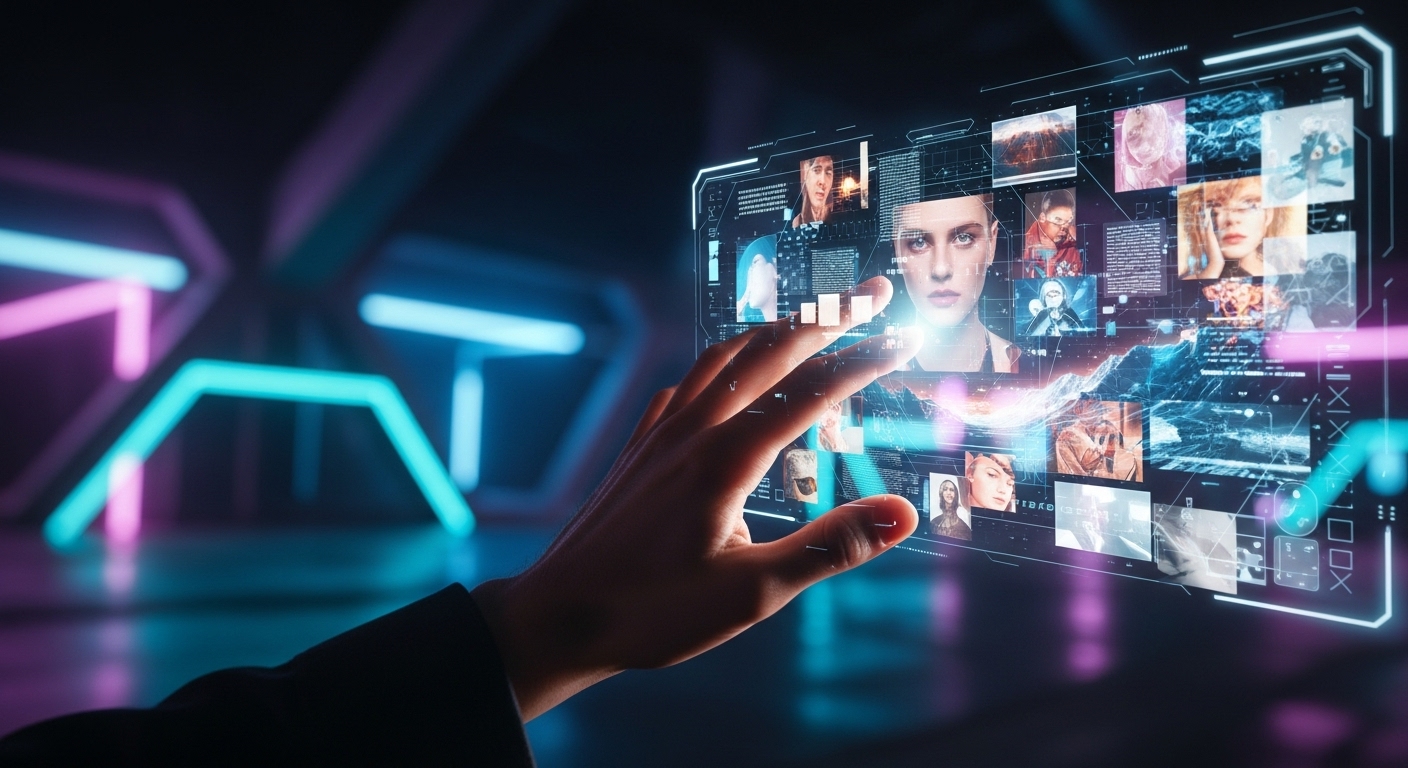
We are living in an era where the digital world is rapidly evolving. However, this evolution is not limited to producing more content—it also involves a shift in the source of content. “Synthetic content,” created through artificial intelligence, virtual reality (VR), augmented reality (AR), and deep learning techniques, appears in the form of videos, audio, text, and images. So, what does this rise bring with it? Here is the ascent of the fine digital line between reality and simulation:
What is Synthetic Content?
Synthetic content encompasses content types generated by artificial intelligence, machine learning, or algorithms with minimal or no human involvement. It ranges from deepfake videos to automatically written articles, from virtual influencers to scenes within the metaverse.
Opportunities: Boundless Creativity
- Revolution in creativity: Artists and content creators now use AI as a partner to create original visuals or videos. For example, AI-composed melodies in music are paving the way for new sonic aesthetics.
- Personalized experiences: In VR/AR content, synthetic characters respond to user behavior, making digital experiences unique.
- Increased production speed: Automated text generation (e.g., AI blog posts, product descriptions) saves time while quickly meeting standard content needs.
Risks: Security and Reality Boundaries
- Propaganda and disinformation: Deepfakes, fake news, and fabricated personas trigger trust issues. It’s becoming harder for users to discern whether they’re interacting with AI or a real person.
- Ethical dilemmas: The proliferation of content with unclear accountability raises risks like fake reputations, mind manipulation, and information distortion.
- Intellectual property conflicts: The use of AI sparks debates over copyright and ownership of creations.
Verification Technologies and Regulations
- Blockchain-based content tracing: Technology enables verification of where and by whom content was created.
- Deepfake detection tools: Algorithms based on facial and voice analysis are evolving to identify fake content.
- Legal frameworks: Efforts to regulate the production, sharing, and ethical boundaries of synthetic content are increasing worldwide.
Consumer Awareness: The Necessity of Critical Literacy
No matter how advanced technology becomes, the role of the content consumer remains at least as critical as the technology itself. Users now must ask questions like “Is the source real?” or “Was this image generated by AI?” Digital literacy is becoming the key to security.
Walking the Fine Line
While synthetic content is one of the most powerful tools of digital creation, it poses challenges in areas like reality, trust, and ethics. At this point, content creators, regulators, and consumers must work together to develop new standards and maintain balance on this fine line. In the future, where will reality diverge from simulation? The answer to this question will be shaped not only by technology but also by ethics, regulation, and awareness.
